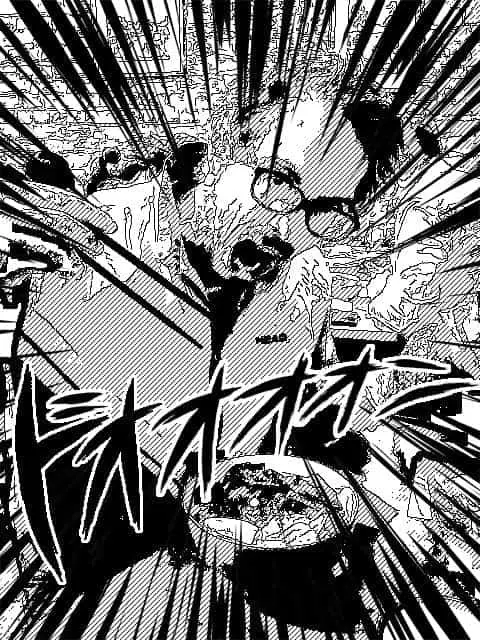Ii Yu Da na いい湯だな(英語版)English Translation
いい湯だな
いい湯だな
湯気が天井から ポタリと背中に
つめてぇな
つめてぇな
ここは北国 登別の湯
いい湯だな
いい湯だな
誰が唄うか 八木節が
いいもんだ
いいもんだ
ここは上州 草津の湯
いい湯だな
いい湯だな
湯気にかすんだ 白い人影
あの娘かな
あの娘かな
ここは紀州の 白浜の湯
いい湯だな
いい湯だな
日本人なら 浪花節でも
うなろかな
うなろかな
ここは南国 別府の湯
The water feels so good
Oh it feels so good
I feel a cold drop on my back
As the steam falls from the roof
And it feels so cool
Yes it feels so cool
I’m in the north country
Noboribetsu And it’s gonna gonna get you
The water feels so good
Yes it feels so good
Who is that singing that
Yagibushi, they make it sound so easy
It sounds so sweet
Yeah it sounds so sweet
Here in jyoshu, kusatsu
Getting my body warm through
The water feels so good
Oh it feels so good
Who is that hazy figure
Coming through the white mist
It could be her, it could be yes
It could be her
Oh it could be her
Right here in old Kishu
Hamatsu, maybe there’s someone loves you
But it feels so good
Yes it feels so good
I feel so Japanese
Feels like I should be
Singing naniwa bushi yeah
In a low low groan
In a low low groan
Now I’m in the south country
In beppu in my birthday suit
Forgetting me, forgetting you
Interview about the song & Ken Shimura on RRR Radio


メルボルンのラジオで下記のインタービューで志村けん、ドリフターズの話しました。
Here’s an interview I did on Melbourne’s RRR radio, Vital Bits Program as part of the Songs In Translation project.
ドリフターズとモンティ・パイソンを比較
The Drifters Versus Monty Python
イギリスにはモンティ・パイソンがいた。日本にはドリフターズがいた。ドリフターズはこれだけ日本で影響が大きかった。どちらもコント基本のコミックの一座でした。どちらも、音楽だけでなく笑いも重視していました。どちらも、数年ではなく数十年にわたって、コンテンツの作成を継続して行う長期的な文化機関になりました。
彼らはそれぞれどれくらい持続しましたか? 1969年から1974年にBBCで放映されたオリジナルの「モンティパイソンフライングサーカス」テレビ番組に対してザドリフターの番組「8時だョ!全員集合」1985年にTBSでなんと16年間(1971年に6か月の休止期間含む)。どちらのグループも、現在に至るまで何らかの形で継続しており、個々のメンバーが独立してプ番組とコンテンツを作成して、断続的に一緒になって作品を共同制作したりしてきました。それは、半世紀以上にわたる、二つの文化を渡る、二つの笑い組が作る天才的な漫才になります。
モンティパイソンとドリフターズの主な違いは?ドリフターズの方が面白いです。
In the U.K. there was Monty Python. In Japan there was The Drifters. Such was the influence of the comic group in Japan. Both were skit based comic troupes. Both had a music focus as well as a comic focus. Both became long running cultural institutions that continued to create content, off and on, across not years but decades.
How long did they each last? The original Monty Python’s Flying Circus program aired from 1969 – 1974 on the BBC, and The Drifter’s program 8時だョ!全員集合 (hachi ji da yo! Zenin Shugo – Everyone Roll Up, It’s Eight O’Clock) ran from 1969 – 1985 for a whopping sixteen years (with a six month hiatus in 1971) on TBS. Both groups have continued in some form or other up to the present day, with individual members creating programs and content independently before coming back to create together intermittently. That’s more than half a century of parallel comic genius.
The main difference between Monty Python and The Drifters? The Drifters are funnier.
志村けん英語教える
Ken Shimura teaching English skit
ジョンクリース性教育を教える Jon Clease teaching sex education skit
Notes about the Drifters
ドリフターズについて最初に知っておくべきことは、1966年のビートルズ日本ツアーの前座を務めたことです。確かに、彼らの持ち時間は合計1分15秒しかなかっただが、それでも認められます。コミック音楽が日本を代表するバンドの1つとしてビートルズの前座をやることになった経緯は、直感的ではありません。でもそれは別の時代でした。あらゆるのエンターテイナーの種類の間の境界線は、現在よりも多孔性がありました。歌手の出番は犬とトリックをする大道芸人を演じた後にあって、ダンサーの出番の前にマジシャンがあって、その次はどんな芸能が出てきてもおかしくない時代でした。基本として求められるのは、人を楽しませることでした。上記のすべての芸能が出来たら、さらに良いのです。
The first thing you should know about the Drifters is that they opened for the Beatles on their 1966 tour of Japan. True, their set went for a total of one minute and 15 seconds, but it still counts. How a comic-music act came to be one of the representative bands of Japan to open for The Beatles is less than intuitive. It was a different time. The line between entertainers of all stripes was more porous than it is now. It was twilight years of the variety show where a singer performs beside a magic act who performs before a dancer who performed someone doing tricks with dogs. The main requirement was that you entertained. If you can do all of the above, all the better.
ビートルズを前座するドリフ
The Drifters opening for the Beatles
ビートルズ来日講演
Beatles 1966 Japan Performance
大雑把にいうと、その事情を変えてのはビートルズとそのようなギターバンドでした。ビートルズ自身は両方の世界に同時に存在しました。ラルフハリス(イギリスで60年代から40年大活躍したオーストラリアの芸人)と「タイミーカンガルーダウンスポーツ」を共演するビートルズのこの録音は、その証拠になります。
In many ways, the Beatles and guitar bands were the ones that changed all that. But the Beatles themselves very much had foot on both stages. This recording of the Beatles playing Tie Me Kangaroo Down Sport with Ralph Harris is evidence of that
ビートルズとロルフハリス共演 The Beatles riffing with Rolf Harris
ドリフターズはこの頃までにほぼ10年の間何らかの形で活動続けて来ていたが、ビートルズの前座をしたことで彼らを本格的に日本全国的に有名になりました。 1956年、マウンテンボーイズと東京ウエスタンボーイズの2つのグループが合併して、The Driftersの原始版を形成しました。彼らは笑い中心というよりは音楽グループとして始めました。
この時代の風習は芸能グループしばしばメンバーが変わったりして回転ドアのようなものでした。初期のドリフターズは例外ではありませんでした。ドリフターズの初期版の1つでは坂本九が含まれており、坂本九は後に「向いて歩こう」、日本国外で「すき焼き」というわけがわからない題名で、で初の本格的海外でクロスオーバーヒット果たしました。この曲は、ヨーロッパ以外の言語で、米国のBillboard Hot 100チャートをトップになった最初の曲です。
初期のドリフターズは、歌謡曲から民謡、笑いの歌、さらには軍歌に至るまで音楽を演奏することで知られていきました。最初の大ヒットは、日本の五音階的なメロディーとピンクパンサー系のデカ番組に出てきてもおかしくないような強力なインパクトのあるズンドコ節でした。恋人・妻・恋人の重なりをほのめかしているような歌詞の歌です。1970年に演奏した映像はこんな感じです:
:
The Drifters had been going in some shape or form for nearly ten years by this time, but opening for the Beatles was what really brought them to national prominence. In 1956 two groups, the Mountain Boys and the Tokyo Western Boys joined forces to form the primordial version of The Drifters. They started out as more of a music group than playing for laughs.
Acts in this era often featured something of a revolving door of members coming and going, and the early Drifters was no different. One version of the group included Kyu Sakamoto, who would later have the true Japan-Western cross-over hit of all time with 上を向いて歩こう, strangely marketed under the name Sukiyaki outside of Japan. The song was the first song from a non-European language to top the Billboard Hot 100 charts in the United States.
Early drifters were known for doing music ranging from kayo 歌謡 songs, to Minyo 民謡 traditional folk songs, comic songs and even military songs. There first big hit was Zundoko-Bushi, which is a somehow-potent mix of Japanese pentatonic melody and Pink-Panther style who-done-it-jazz, tells the story of several stages of love from across a man’s life, several of which seem to hint at an overlap between lover-wife-lover. Here’s them performing it in 1970:
ドリフターズズンドク節 The Drifters Zundoku-Bushi
ドリフターズは日本でトップ10ヒットをいくつか放ち続けましたが、時間が経つにつれコメディへとだんだんに転向しました。個々のメンバーはそれぞれ、長いキャリアを渡って、グドリフターズ外で音楽を制作し続けました。
The group went on to have several top 10 hits in Japan, but turned more towards comedy as time went on. Each of the individual members would continue to produce music outside of the group for much of their careers.
志村けん Ken Shimura
Ken Shimura was the latest Drifter to join the group at the age of 24. He became well known for doing the festive Higashimurayama Ondo. Anyone who has been to a Bon Odori will recognise the hypnotic, thudding rhythmic style of this one.
志村けんは24歳でグループに入った最新のドリフターでした。彼が歌う祭りっぽいの「東村山音頭」が有名になりました。盆踊りなどに行ったことのある人なら、この催眠的にドンドンとリズミカルに鳴るスタイルになじみはあるでしょう。
けんさんは世界打撃を打つ、まあおそらく日本を打撃を打つ、ドリフターズのテレビ番組の時期を経て、「けんさんはバカ殿様」や「変なおじさん」や、「志村けんのだいじょうぶだぁ」などというような人気番組も制作しました。
けんさんは、ドリフターズの仲間とともに、モンティパイソンは多くのイギリス人にとってと同じように、まさに国民のヒーローでした。
彼の死でさえ日本人の最後の奉仕となりました。 2020年3月20日に彼は肺炎で入院しました。 3月23日、けんさんCovid-19陽性であることが世界に発表されました。彼は3月29日までにこの世を去ってしまいました。
着実に増加しているが、Covid感染の数が比較的少ない日本では、志村けんさんの死は日本人にとって大きな打撃でした。志村けんは、3世代の日本人が共に育った面白いやつでした。今度は、この病気は日本国民の実際に知っている人を奪いました。今度は、この病気は本物になりました。志村けんさんの死は、来たる危機に対する日本の意識の大きな転機となりました。この記事の執筆時点で、4月8日であり、日本は緊急事態を発表しています。志村けんの最後の行動は、日本の「炭鉱の中のカナリア」になることでした。
それはMonty Pythonが受け取ったがない不幸な賞ではあります。
After a world beating, okay, maybe Japan-beating, period doing live performances and TV with the drifters, he went on to create highly successful alter-ego characters including バカ殿様 (Baka Dono Sama – Sir Idiot) and 変なおじさん (Henna Ojisan – Weird Old Guy). He went on to create other popular shows such as 志村けんのだいじょうぶだぁ (Shimura Ken no daijyoubudaa – Ken Shimura’s It’s Okay).
Ken Shimura, along with his Drifters companions, was truly a people’s hero in the same way that many members of Monty Python went on to be in the U.K.
Even his death served as a final service to the Japanese people. On the 20th of March 2020 he went to hospital with lung inflammation. On the 23rd of March, it was announced to the world that he had Covid-19. He was dead by the 29th of March.
In a Japan that was seeing steadily rising, but relatively low numbers of Covid infections, Ken Shimura’s death came as a major shock to the Japanese people. Ken Shimura was the funny guy that three generations of Japanese had grown up with. Now the sickness had taken someone they knew. Now the sickness was real. Ken Shimura’s death represented a major turning point in Japan’s awareness of the coming crisis. On the writing of this article, it is the 8th of April and Japan has just announced a state of emergency. Ken Shimura’s final act was to be the canary in the coal mine of the Japanese psyche.
There’s one credit no Monty Python member has ever had the misfortune to claim.
いい湯だな Ii Yu Da Na
60年代初頭、ラジオのアナウンサーであり作家である永六輔と作曲家の泉拓はかなり野心的で、ひょっとして楽しいアイデアがありました。彼らは日本中を旅し、あらゆる地域についての歌を書くことしました。その半世紀後ぐらいに、インディーのソングライターであるSufjan Stevensは、彼と似たようなプロジェクトに着手していることを世界に発表しました。それはアメリカのすべての州をうたったアルバムを書くことです。 前述と後述の2つのプロジェクトの主な違いは、スフジャンは50枚の州のアルバムを執筆するというの中でミシガン州とイリノイ州の経った2枚のディスクでやる気がなくなり、エイとタクのプロジェクトでは、日本の47都道府県ごとに1曲ずつ、さらに5曲追加して、見事に完成しました。
彼らはアイデアをどこからともなく引き出していたわけではありません。日本にはご当地ソングというジャンルがあり、各地の歌を歌っています。もちろん世界中のソングライター、自分の家や自分が知っている場所について書くことは、ごく普通の行為です。ウッディ・ガスリーは「あなたが実際見た光景を書け」というぐらいです。ほとんどの人が実際に見ている風景はの自分の住んでいる場所です。しかし、日本は町、地域、地域の間で言語、食物、文化の違いが特に顕著であります。日本の音楽の中には「地元」をうたったポピュラー音楽や民謡や歌謡や、あらゆるジャンル数多くあるのは理解しやすいです。アメリカにはホームランどロックがあり、日本にはご当地ソングがあります。
日本の芸能文化にはまた、続き物、シリーズを作成する傾向があります。北斎の「富嶽三十六景」または広重の東海道五十三次のように。
「いい湯だな」は、ご当地ソングのシリーズから生まれました。この曲は、19年回の紅白歌合戦に演奏されました。 「日本の歌」サイクルの他の曲も、17、20、22回目の紅白に登場しました。それはかなりの偉業です。
元々、この曲はデュークエースによって歌われました。
その後、ドリフターズはそれを引き受け、毎週修正版の曲で「8時だよ全員集合」の番組を閉めました。この歌は、毎週、年中無休、1億人以上の日本人の居間に浸透して行きました。それほど大衆に親しまれる機会があった歌は他にないでしょう。
In the early 60s radio announcer and writer Rokuseke Ei and composer Izumi Taku had a pretty ambitious, and potentially very fun idea. They would travel all over Japan and write a song about every area. Half a century later, indie-orchestral songwriter Sufjan Stevens would announce to the world he was embarking on a similar project – to write an album for every state in America. The main difference between the two projects was that Sufjan’s motivation to write 50 state albums lasted for two discs, Michigan and Illinois, and that Ei and Taku’s project produced 42 songs, one for each prefecture of the 47 prefectures in Japan, plus a few for good measure.
They weren’t pulling the idea out of nowhere. There is a whole genre of songs in Japan called ご当地ソング (gotochi song), which are songs about different local regions. Of course, writing about your home and the places you know is pretty much a no brainer. Woody Guthrie struck the string in the right place when he urged people to just “write what you see”. And what you see is where you live. Yet, Japan is a place with particularly pronounced differences between towns, areas and regions, for language, food and culture. You can see how it could easily sustain a whole subsection of popular and folk music devoted to paying homage to the local. America has Homeland Rock, Japan has hometown folk.
Japanese culture also has a penchant for creating series in their arts -think Hokusai’s 36 views of Mount Fuji or Hiroshige’s Fifty-three Stations of the Tōkaidō.
Ii Yu Da Na started out its life as one of these songs. This song featured at the iconic 紅白歌合戦 kohaku uta gasen, song competition, in it’s 19th year. Other songs from the “Songs of Japan” cycle also appeared at the 17th, 20th and 22nd song competition. That’s quite a feat.
Originally, the song was sung by the Duke Aces.
Later the Drifters took it on, and would close their “Roll Up It’s 8 o’clock” show with a modified version of the song every week. The song infiltrated the lounge rooms of 100 million Japanese, weekly for a decade and half. There’s not many songs that get that kind of opportunity to commune with the masses.
Japan was also producing some very strange and wonderful guitars during this period of history. We’ve written about some of them here.

翻訳ノート Notes On Translation
表面的には「当地」に焦点を当てている曲の割に、いい湯だなのメッセージは普遍的なものです。リフレインの「いい湯だな」とは単純に「お湯が気持ちいい」という意味です。温かいお風呂のぬくもりを味わう感覚とは無縁の人は世界でも少ないでしょう。しかし、この歌の表現は明らかに日本的です。日本語には英語で2つの単語が必要となる一言はあります。「湯」です。元の日本語は単純であるためこそ、英語に翻訳するのが難しくなります。私は「お湯」の「暖かい」意味を放棄することを選択し、「waterはとても気持ちがいい」にしました。お風呂で「the water feels so good」といった時に、事情からwaterの温度はどんな感じか言わなくても分かるでしょう。
言語の翻訳で最も楽しくてやりがいのあるところは、日本語の地名を英語で韻を踏むことでした。 2つの言語の韻を踏むことは、いやらしい感じしました。いい意味で。寝室でいたずらにするような感覚で。
英語は日本語に比べて音節が非常に少ないという実態も、歌を翻訳する機会を与えてくれます。より短時間で多くの情報を伝えることができます。その結果、言葉で遊ぶ時間が余るということです。この曲では、「余分な時間」を使っていくつかの言葉の勝手な遊びをしました。
Yet, for a song that ostensibly focuses on the local, it’s message is simultaneously parochial and universal. The refrain いい湯だな means something like “the hot water feels so good”. There are few people in the world that cannot relate to the simple sensation enjoying the warmth of a hot bath. Indeed, here at Japanoscope, we are big bath people and have given our opinions about how to get a Japanese bath into your home. But the way it is expressed here in song is distinctly Japanese. It is telling that the Japanese language has a word that takes two in English. 湯 yu. The simplicity of the original Japanese presents a problem for translating into English. I chose to relinquish the “hot” part of “hot water” and went with just “the water feels so good”. If you’re in a hot bath exclaiming how great the water feels, hot is probably going to be clear from context.
The most fun and challenging part of translating the language was rhyming the Japanese place names with English. Rhyming two languages feels perverse. In a good way. It’s the linguistic equivalent of getting naughty in the bedroom.
The fact that English has so many fewer syllables than Japanese also gives you opportunity when you translate songs. You can get a lot more information in a shorter time. Which means you’ve got time to play with. In this song, I used this “extra time” to take a few liberties.
ここは北国 登別の湯
「ベツ」と「Get you」を韻を踏みました。私は登別に行ったことありませんが、居間まで行った日本の温泉のほとんどが僕の心をゲットしました。
I’m in the north country Noboribetsu, And it’s gonna gonna get you
I rhymed betsu with “get you”. I haven’t been romanced by Noboribetsu, but just about every hot spring I’ve been to in Japan hasn’t failed to “get me”.
ここは上州 草津の湯 の湯
Here in jyoshu, kusatsu
Getting my body warm through
Threw this one, we had the space so why not?
ここは紀州の 白浜の湯
「誰かが愛しているかもしれない」は前の詩の意味を拡張したもので、「湯気にかすんだ 白い人影あの娘かな」の延長です。あの娘は誰なのかわからないがきっと誰かお母さんとかではないでしょう。
Right here in old Kishu
Hamatsu, maybe there’s someone loves you
“Maybe there’s someone loves” extends out the meaning of the previous verse, which has hinted at seeing a “figure in the white mist” and wondering if it is “that girl”. Who that girl is we don’t know. I’m pretty sure it’s not your mum.
ここは南国 別府の湯
元の曲には「Birthday suit」のような言及がないこと認めます。「Birthday suit」とは俗語的な言葉で「生まれつきの服」としての意味で「裸」という意味です。なんとなく「別府」と響きが似ていてついに韻を踏んでしまいました。別府に恐れの気持ちでいっぱいです。
オリジナルには「Forgetting me, forgetting you」、「あなたを忘れて、私も忘れられる」というものもありません。しかし、この曲に、一人でお風呂に行って、次回行った温泉でもやの中でお風呂に入っている女を見て、希望を抱き、恋に失敗して、結局お風呂の温もりに戻ったといった誰かの物語が埋もれているではないかと僕は解釈しました。エイとタクが承認してくれるでしょうか。
In beppu in my birthday suit
Forgetting me, forgetting you
Okay, so the original doesn’t have a reference to “birthday suit” and I guess I owe the whole region of Beppu an apology for rhyming that one with them. Sometimes these things just come out in the process.
The original doesn’t have the “forgetting me, forgetting you bit” either. But I feel this gives the song a bit more of a story arc of someone that has maybe gone to a bath alone, then seen someone at a bath in the haze, got their hopes up, failed in love, and gone back to the hot bath for solace once again. Hopefully Ei and Taku would approve.

Who is behind this site?
I’m Peter Joseph Head. I lived in Japan for four years as a student at Kyoto City University of the Arts and on working holiday, have toured the country six times playing music and speak Japanese (JLPT N1).
ピータージョセフヘッドです。3年間京都市立芸大の大学院として、一年間ワーキングホリデーとして日本に住み、6回日本で音楽ツアーをし、日本語能力試験で1級を取得しました。要するに日本好きです。
Podcast: Play in new window | Download
